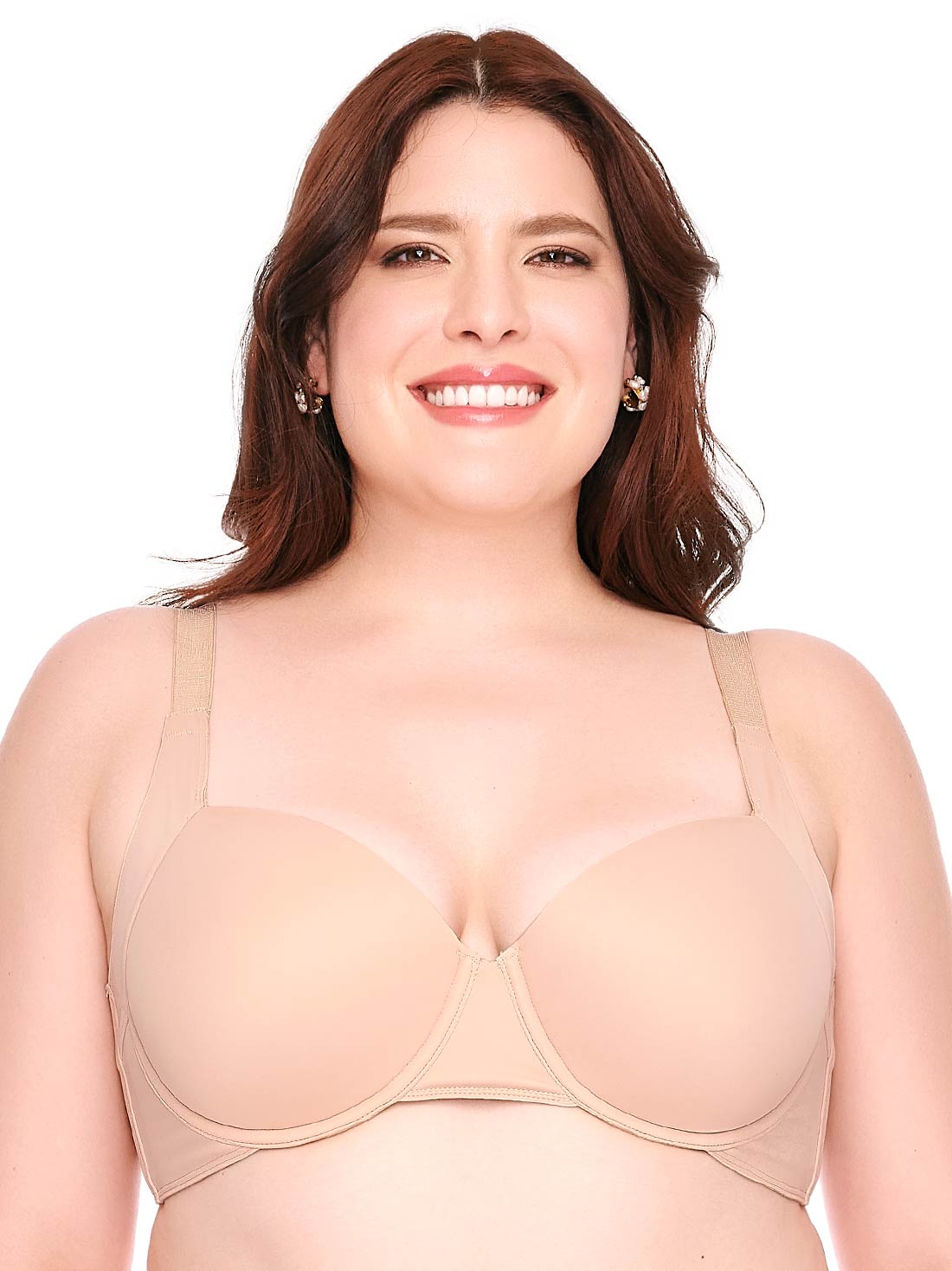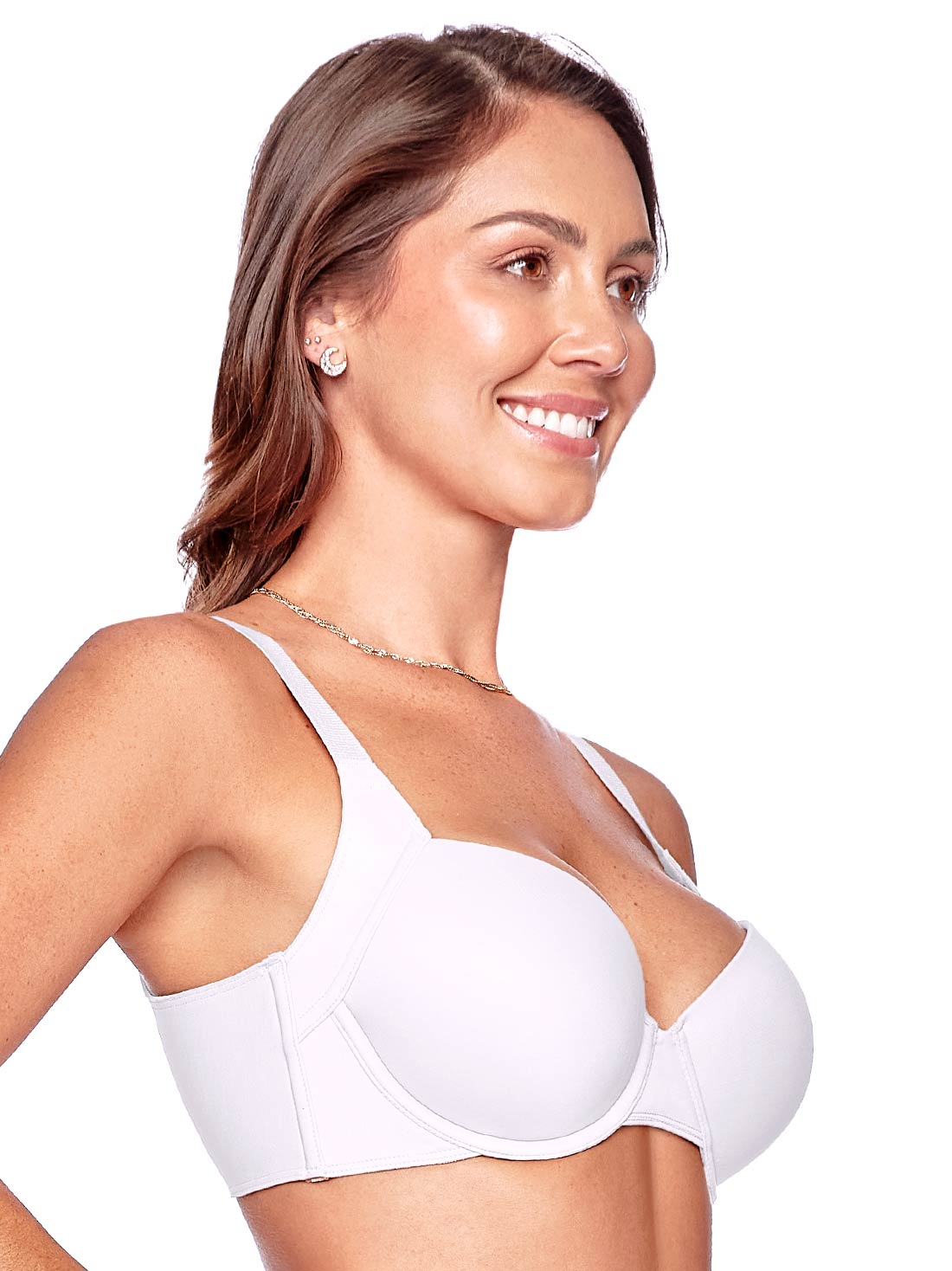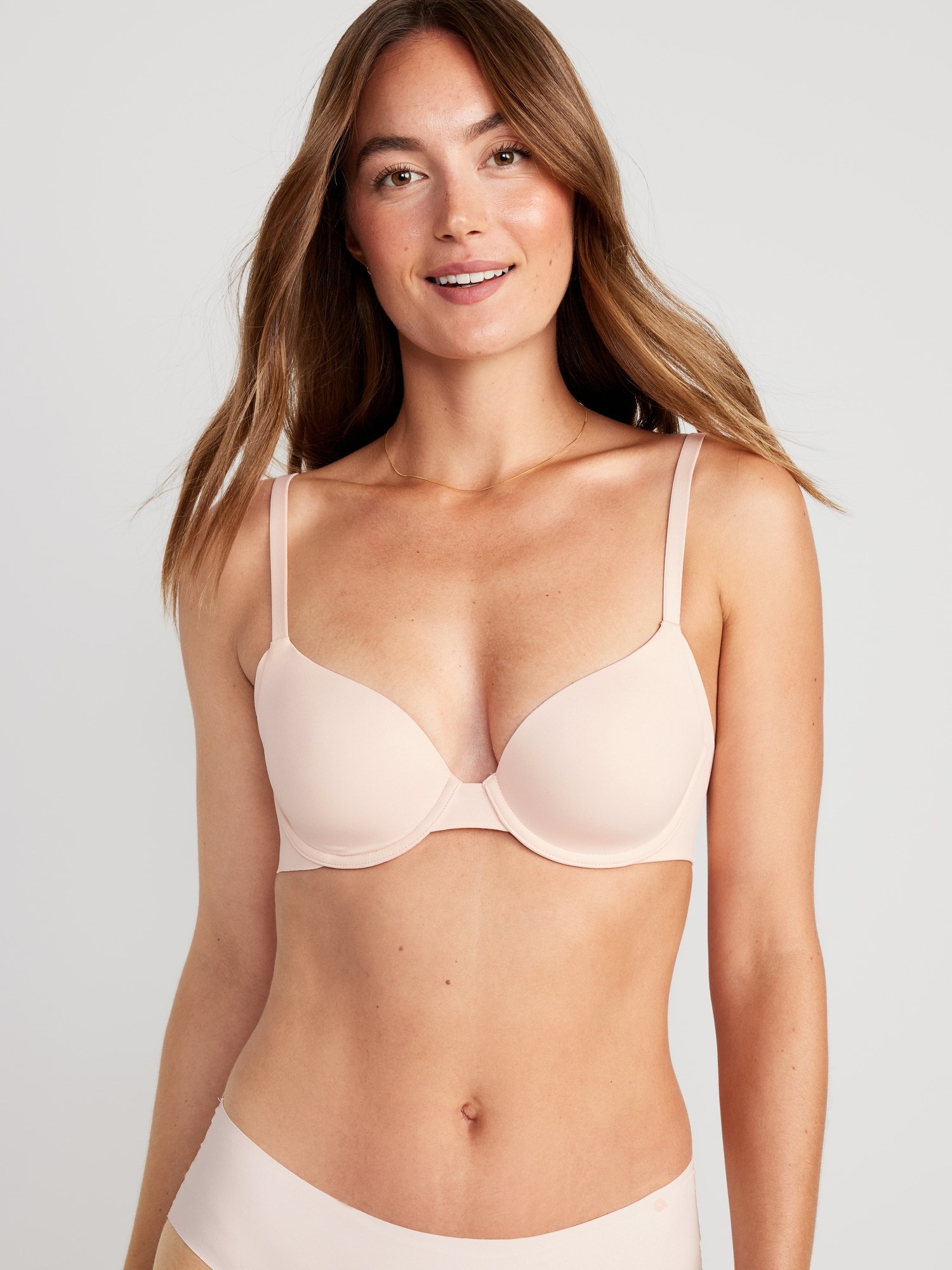Finding Your Perfect 38D Full Coverage Bra: Support And Comfort Explained
Finding the right bra can truly change how you feel every single day. For anyone who wears a 38D, you know the importance of a bra that offers both comfort and steadfast support. A well-fitting bra, especially one that provides full coverage, can make a huge difference in how your clothes lay and, more importantly, how you carry yourself. It's almost like a secret weapon for feeling good, you know?
A full coverage bra for a 38D size isn't just about modesty; it's about providing ample support across the entire breast, reducing spillage, and giving a smooth, natural shape under your clothing. This kind of bra is designed to encapsulate the breast fully, which can be particularly beneficial for those with a fuller bust. So, in some respects, it's about practical comfort as much as anything else.
We'll talk about what the 38D size actually means, why full coverage is often a great choice, and what features to look for when you're shopping. Understanding these things can help you pick out a bra that feels custom-made for you, offering that just-right feeling. This information is current as of June 10, 2024, by the way.
Table of Contents
- What Exactly is a 38D Bra?
- Why Choose a Full Coverage Bra for 38D?
- What to Look For in Your 38D Full Coverage Bra
- Tips for Finding Your Best Fit
- Caring for Your Full Coverage Bra
- Frequently Asked Questions About 38D Full Coverage Bras
What Exactly is a 38D Bra?
When you see a bra size like 38D, it's actually telling you two distinct things about the garment. The number and the letter are, in fact, two different measurements, as a matter of fact. It’s not just one combined size, but rather a pair of figures that work together to describe the bra's shape and fit. Understanding each part helps in picking out the right one.
Understanding Band Size
The "38" in 38D refers to the band size. This number represents the measurement around your chest, just under your breasts. It's the part of the bra that goes around your ribcage, providing the majority of the support. So, if you have 38 inches around your ribcage near your breasts, that’s your band width, typically. Band widths on average women range quite a bit, of course.
The band size is very important because it does most of the heavy lifting, so to speak. If the band is too loose, the bra won't stay in place, and the cups won't offer the support they should. If it's too tight, it can feel uncomfortable and dig into your skin. It's a bit like finding the right belt size for your waist, you know? The number is the garment size, kind of like clothing, and they are counted in even sizes, usually.
Decoding the D Cup
The "D" in 38D is the cup size. This letter describes the volume of your breast. It's a measurement that works in relation to the band size. A D cup on a 38 band will accommodate a different breast volume than a D cup on a 36 band, for example. The cup size is constant only in its relative measurement to the band it's paired with, you see.
The letter D indicates a certain difference between your bust measurement (around the fullest part of your breasts) and your under-bust measurement (the band size). This difference helps determine the cup's depth and width. So, in other words, the D cup is designed to hold a specific amount of breast tissue for someone with a 38-inch under-bust measurement.
Sister Sizes and the 38D
Here's something interesting about bra sizing: a 40C would have the same cup volume as a 38D or a 36DD. These are called "sister sizes." It means that while the band and cup letters change, the actual volume the cup holds stays roughly the same. This is very useful to know if you're having trouble finding a comfortable fit in your usual size.
For instance, if a 38D feels a bit tight in the band but the cups are good, you might try a 40C. You're going up a band size but down a cup letter, which often keeps the cup volume similar. Likewise, if the 38D band feels good but the cups are a little big, a 36DD might offer a similar cup volume on a tighter band. The next bra size after a 40C is typically a 42C if you increase the band size while keeping the cup size the same. Alternatively, you could also consider a 40D if you prefer to, you know, adjust the cup volume slightly.
Why Choose a Full Coverage Bra for 38D?
For a 38D, a full coverage bra is often a wonderful choice, and for some very good reasons. These bras are designed to offer maximum encapsulation of the breast tissue, which means more of your breast is held within the cup. This design brings a lot of advantages, especially for daily wear, apparently.
The Comfort Factor
One of the biggest benefits of a full coverage bra is the comfort it provides. With more fabric and structure around the breast, the weight is distributed more evenly. This can reduce pressure points and prevent the feeling of "spillage" over the top or sides of the cups, which can be quite uncomfortable throughout the day. It's about feeling secure and supported, which contributes a lot to overall comfort, truly.
When a bra fully encloses the breast, there's less shifting and movement, which means less friction and irritation on your skin. This is especially important if you're active or wear your bra for many hours. Full coverage bras often have wider bands and straps too, which helps in spreading the pressure, making them feel much more pleasant to wear, actually.
Unwavering Support
Support is, arguably, the primary reason many choose full coverage. For a 38D, having unwavering support is key to preventing discomfort and maintaining breast health. A full coverage bra lifts and holds the breasts firmly, helping to alleviate strain on your back and shoulders. This type of support can be a real game-changer for posture, too.
The design of these bras typically includes features like wider straps, a sturdy band, and often a higher center gore (the piece between the cups). These elements work together to keep everything in place, reducing bounce and providing a stable foundation. It's about giving your breasts a reliable hold, which is pretty important for daily activities, don't you think?
A Smooth Look
Another great thing about full coverage bras is the smooth silhouette they create under clothing. Because the cups fully contain the breast, there are no bulges or lines where the breast tissue might spill out. This means your clothes, whether it's a fitted top or a casual t-shirt, will lie more smoothly and flatteringly. It's a bit like having a seamless foundation for your outfit, essentially.
This smooth appearance can contribute to a more polished and put-together look. You won't have to worry about adjusting your bra throughout the day or feeling self-conscious about how your clothes fit over your bust. It offers a clean line, which is very appealing for many people, naturally.
Boosting Your Confidence
When you feel comfortable and supported, your confidence can really get a boost. A well-fitting 38D full coverage bra can help you stand taller and feel more at ease in your own skin. Knowing that your bra is doing its job, providing excellent support and a smooth shape, can free you up to focus on other things, rather than constantly thinking about your bra.
This feeling of security and comfort can translate into a more confident demeanor. It's about feeling good from the inside out, and a bra that fits perfectly is a fundamental part of that. So, in some respects, it's not just about the garment itself, but about the feeling it gives you, you know?
What to Look For in Your 38D Full Coverage Bra
When you're searching for that perfect 38D full coverage bra, there are several key features to keep in mind. These elements work together to give you the best possible fit, support, and comfort. Paying attention to these details can make a big difference in your overall experience, honestly.
Band Matters Most
The band is the true workhorse of your bra. For a 38D, about 80% of the support comes from the band, not the straps. So, it's incredibly important that the band fits snugly and stays level across your back. When you try on a bra, the band should feel firm but not uncomfortably tight, and you should be able to fit just two fingers underneath it, apparently.
Look for bands that are wide and made from strong, resilient fabric. A wider band provides more surface area for support and helps to distribute weight more effectively. It also tends to stay in place better, preventing the bra from riding up your back. This stability is very important for a larger cup size, typically.
Cup Construction
For full coverage, the cups should fully enclose your breasts without any spillage at the top, sides, or bottom. The fabric should lie smoothly against your skin, and there should be no gaping. The wire, if present, should sit flat against your ribcage all the way around your breast, without digging in or poking out. This is a very clear sign of a good fit, usually.
Consider the material and construction of the cups. Some full coverage bras have molded cups for a smooth shape, while others might be seamed for extra support and lift. Both can work well, but it depends on your preference and what kind of shape you're looking for under your clothes. A good cup will hold everything in comfortably, more or less.
Strap Support
While the band does most of the work, the straps still play a role in comfort and positioning. For a 38D, wider, padded straps are often a good idea. They help to distribute the weight across your shoulders more evenly, preventing digging and discomfort. The straps should feel secure but not tight; you should be able to slide a finger underneath them with ease, as a matter of fact.
Adjustable straps are also very important, allowing you to customize the lift and fit. Some full coverage bras have straps that are closer set or have a U-back design, which can prevent them from slipping off your shoulders, a common annoyance for many. It's about finding that balance between support and comfort for your shoulders, you know?
Fabric Feel
The fabric of your bra contributes a lot to its overall comfort. Look for soft, breathable materials that feel good against your skin. Cotton blends, microfibers, and certain types of lace can be excellent choices. The fabric should also be durable enough to provide lasting support wash after wash. You want something that holds its shape, basically.
Consider if you prefer a seamless look for everyday wear, or if you don't mind a bit of texture from lace or embroidery. Some fabrics offer more stretch, which can be comfortable, while others are firmer for maximum support. It's a bit about personal preference, but also about what feels good and lasts, truly.
Tips for Finding Your Best Fit
Finding the right 38D full coverage bra can feel a bit like a quest, but with a few simple tips, you can greatly improve your chances of success. It's about paying attention to details and trusting how the bra feels on your body, you know?
Getting Your Measurements Right
Even if you think you know your size, it's a good idea to measure yourself periodically. Our bodies change, and so can our bra size. The number is the measurement around your chest, just under your breast. To measure your band size, measure snugly around your ribcage, just under your bust. For cup size, measure around the fullest part of your bust, then subtract your band measurement from this number. Each inch difference corresponds to a cup letter (e.g., 1 inch = A, 2 inches = B, and so on). A 4-inch difference usually means a D cup, but this can vary slightly by brand, so keep that in mind.
It’s also helpful to remember that different brands can have slightly different sizing, even for the same stated size. So, a 38D from one company might fit a little differently than a 38D from another. This means your measurements are a starting point, but trying on is still key, apparently. You may login via this link to check your inbox, but for bras, you really need to try them on.
Trying On for Success
When you try on a bra, always start by fastening it on the loosest hook. This way, as the bra stretches over time, you can move to tighter hooks to maintain a snug fit. The band should be level all the way around your back, not riding up. If it rides up, the band is too loose, pretty much.
Next, make sure your breasts are fully scooped into the cups. Lean forward, scoop all your breast tissue from under your arms and from the bottom up into the cups. The cups should lie smoothly without any gaping or spillage. If you have spillage, the cups are too small. If there's extra fabric, they're too big. A 38D, but it prob won't fit as well if you don't do this step, you see.
Finally, check the straps. They should be adjusted so they provide a gentle lift without digging into your shoulders. Bounce a little, move your arms around, and sit down to see how the bra feels. If it’s comfortable and supportive during these movements, you’re likely on the right track, basically.
When to Replace Your Bra
Bras don't last forever, sadly. Over time, the elastic in the band and straps will stretch out, and the cups may lose their shape. A good rule of thumb is to replace your bras every 6 to 12 months, depending on how often you wear them and how well you care for them. If your band is no longer snug on the tightest hook, or if the cups are visibly stretched or misshapen, it's probably time for a new one, truly.
Investing in a few good quality 38D full coverage bras that you rotate can help extend their life. Having bras that are worn out means you're losing the support you need, which can lead to discomfort. So, in other words, keeping an eye on their condition is a smart move for your comfort and support, you know?
Caring for Your Full Coverage Bra
Proper care can significantly extend the life of your 38D full coverage bras, keeping them supportive and comfortable for longer. It's a bit like caring for any delicate item, actually. Most bras should be hand washed or machine washed on a gentle cycle in a mesh laundry bag. This helps prevent tangling and stretching, which can damage the elastic and wires.
Always use a mild detergent and cold water. Hot water can break down the elastic fibers over time. After washing, reshape the cups and lay the bra flat to dry or hang it by the center gore. Avoid putting bras in the dryer, as the heat can destroy the elastic and cause the wires to warp. Air drying is always the best option for maintaining the bra's integrity, more or less.
Storing your bras properly also helps maintain their shape. Avoid folding molded cups in half, as this can create permanent creases. Instead, stack them or lay them flat in a drawer. This little bit of care goes a long way in preserving the fit and feel of your favorite bras, truly.
Frequently Asked Questions About 38D Full Coverage Bras
What does 38D mean in bra size?
The "38" in 38D indicates the band size, which is the measurement around your ribcage just under your breasts, typically 38 inches. The "D" refers to the cup size, which is a measurement of breast volume relative to that 38-inch band. It means there's a specific difference between your bust and under-bust measurements, allowing for a certain volume of breast tissue to fit comfortably within the cup, as a matter of fact.
Is a 38D a large bra size?
Whether a 38D is considered "large" really depends on perspective. It represents a common combination of band and cup measurements. While the D cup might sound big, it's important to remember it's relative to the 38-inch band. A 38D has the same cup volume as a 40C or a 36DD, for instance. Many people find this size to be a good fit for their body shape, providing ample support and coverage, you know?
How do I know if my 38D full coverage bra fits correctly?
You'll know your 38D full coverage bra fits well if the band is snug and level across your back, without riding up. The cups should fully contain your breasts without any spillage at the top, sides, or bottom, and there should be no gaping. The center gore between the cups should lie flat against your chest, and the straps should feel supportive without digging into your shoulders. If it feels comfortable and stays in place when you move, that's a good sign, essentially. Learn more about bra fitting on our site, and link to this page for more bra care advice.
For more insights on finding your ideal bra, you might want to check out resources from reputable lingerie experts, like the information available on websites that specialize in bra fitting advice. A good bra size calculator can sometimes help as a starting point, too.

Full Coverage Bra 7352 | Ilusion

Full Coverage Bra 7352 | Ilusion

Seamless Full Coverage Bra | Old Navy